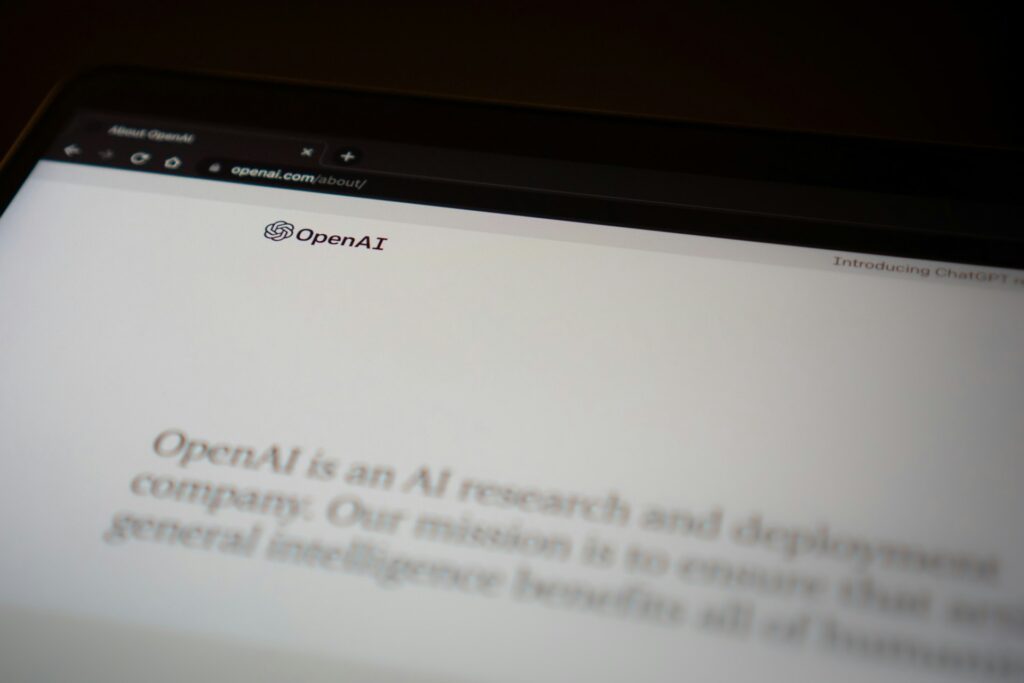Do you feel like your ChatGPT answers are just… okayish? You ask a question, get an answer, and it’s useful, but not exactly mind-blowing.
The thing is, the magic isn’t in the AI itself. It’s in how you ask. Most people treat ChatGPT like a search engine, just looking for information. But power users treat it like a smart, expert partner and give it clear directions.
In this guide, I’ll show you 10 game-changing ChatGPT prompts that can help you make that shift. These prompts cover everything from strategic thinking to productivity and learning.
It’s time to start giving your AI more direction to get the brilliant, structured, and nuanced answers you’re looking for.
Contents
- 1 1. Master Negotiations with ChatGPT as Your Coach
- 2 2. Uncover the Secrets Behind Success with Reverse Engineering
- 3 3. Get a 360-Degree View by Simulating Expert Debates
- 4 4. Create Your Ideal Productivity Schedule with ChatGPT
- 5 5. Turn Chaos into Clarity: Build SOPs from Scratch
- 6 6. Predict Project Failures Before They Happen with a Pre-mortem
- 7 7. Simplify Complex Ideas with Creative Analogies
- 8 8. Troubleshoot and Optimize Workflows Like a Pro
- 9 9. Co-Create Interactive, Choose-Your-Own-Adventure Stories
- 10 10. Break Down Big Learning Goals into Daily Challenges
- 11 Bonus: Become a Critical Thinker with a Socratic Approach to Learning
- 12 Your Ultimate ChatGPT Power User Guide
1. Master Negotiations with ChatGPT as Your Coach

Got a big negotiation coming up? This prompt turns ChatGPT into your personal negotiation coach. It helps you simulate different scenarios, so you can try out strategies and practice your responses. It’s one of the best ways to use ChatGPT for professional growth.
Instead of just asking for general advice, give ChatGPT a specific role and some context. That way, it can give you more tailored, actionable tips.
Here’s the prompt:
“Act as an expert negotiation coach with decades of experience in high-stakes business deals. I’m preparing for a salary negotiation next week. My goal is a 15% raise. My manager is data-driven but values loyalty. My Best Alternative to a Negotiated Agreement (BATNA) is a competing offer for a 10% raise. Create three likely scenarios for this conversation. For each scenario, provide me with specific phrases to use and analyze potential weaknesses in my position.”
This works because you’re not just getting generic advice. You’re creating a practice space where the AI simulates real negotiation pressure, helping you build confidence and prepare for objections.
It’s like having a sparring partner to work through your strategy without the stakes. Plus, it’s a great way to improve your negotiating skills, even if you don’t have access to high-level coaching.
Also See: The Ultimate ChatGPT Glossary: 60 Essential AI Terms Everyone Should Know
2. Uncover the Secrets Behind Success with Reverse Engineering

Ever wonder how successful people or companies really pull it off? Generic advice about “hard work” isn’t enough.
This prompt goes deeper and uncovers the hidden systems and mental models behind real success. It helps you break down the behind-the-scenes infrastructure that makes high achievers seem effortless.
Here’s the prompt:
“Reverse-engineer the invisible systems behind [Apple’s product launch strategy]. What are the 7 layers of their process that most people never see? Focus on their internal communication, supply chain preparation, and media manipulation, not just the public-facing marketing tactics.”
What makes this work is that it shifts ChatGPT from just gathering info to actually analyzing how success is structured. It gets you thinking in systems, not just surface-level tactics.
For example, analyzing Elon Musk’s productivity might reveal things like “mental models borrowed from physics” or a curated “information diet.” By breaking down the success of others, you can build your own actionable blueprint to reach your goals faster. It’s like fast-tracking your learning curve.
3. Get a 360-Degree View by Simulating Expert Debates

Want a well-rounded view of a complex topic? The best way is to watch experts debate it. This prompt does exactly that by simulating a discussion between experts with opposing viewpoints, giving you a 360-degree view of any issue.
It’s a great tool for challenging your own biases and helps you understand well-reasoned arguments from all sides.
Here’s the prompt:
“Simulate a boardroom discussion about my startup’s next big move. The topic is: “Should we focus on acquiring new users or retaining existing ones for the next quarter?” Include these personas:
– A growth-focused Head of Marketing.
– A data-driven, conservative CFO.
– A customer-obsessed Head of Product.
Let them debate the pros, cons, and potential risks of each strategy.”
This works because it pushes you to break out of your own perspective. By seeing strong, valid arguments from every side, you’ll be better equipped to make more balanced, informed decisions.
It’s like prepping for the toughest questions and challenges before they even happen. This method helps you think critically and navigate tough choices with confidence.
Check: These 6 ChatGPT Prompts Make Your Old Social Media Posts Go Viral
4. Create Your Ideal Productivity Schedule with ChatGPT

Feeling overwhelmed by a long to-do list? This prompt takes all that chaos and turns it into a structured plan. It creates a detailed schedule for your day, using proven time management techniques to keep you focused and productive.
Instead of stressing about how to plan your day, this prompt automates it for you, saving you energy for actually getting things done.
Here’s the prompt:
“Act as my productivity coach. I need to create a schedule for tomorrow. My workday is from 9 AM to 6 PM. Here is my to-do list: [List your tasks]. Break my day into 25-minute Pomodoro sprints with 5-minute breaks. Group similar tasks together. Schedule a 1-hour lunch break at 1 PM. Keep me accountable by asking me to check in after each sprint.”
This prompt takes the guesswork out of planning. It creates an optimized productivity schedule in seconds.
By removing the “what should I do next?” question, you can stay in a state of flow and keep your momentum going all day. You can even experiment with different systems, like Pomodoro one day and time-blocking the next, to find the schedule that works best for you.
5. Turn Chaos into Clarity: Build SOPs from Scratch

Documenting processes is crucial, but can feel like a drag, especially when you’re trying to scale your team. This prompt is a game-changer because it turns messy brain dumps or even video transcripts into clear, step-by-step Standard Operating Procedures (SOPs). It’s a major move for any manager looking to save time and streamline operations.
This approach helps bridge the gap between the processes in your head and what your team actually needs to follow.
Here’s the prompt:
“I have recorded a video of myself performing our client onboarding process. Here is the transcript: [Paste transcript]. Turn this transcript into a clear, step-by-step SOP for a new team member. The SOP should include sections for: Purpose, Required Tools, Step-by-Step Procedure, and Key Contacts. Ensure the language is simple and direct.”
What makes this so powerful is that it turns the task of documenting workflows into a breeze. You can just perform the task while recording and let the AI handle the writing and structuring.
This allows you to quickly build a knowledge base, streamline onboarding, and make sure your team can work more independently. It’s a huge time-saver, especially for growing teams, and ensures consistency as your operations scale.
Also Read: Use ChatGPT at Work? These 10 Prompts Will Boost Your Productivity and Make You Look Like a Genius
6. Predict Project Failures Before They Happen with a Pre-mortem

Projects fail for a lot of the same predictable reasons. A pre-mortem helps you identify those reasons before you even start. This prompt gets you to imagine that your project has already failed, and then you work backward to figure out why it went wrong.
It’s a clever psychological trick that helps you bypass the usual optimism bias and plan more realistically.
Here’s the prompt:
“We are about to launch a new mobile app. I want you to conduct a pre-mortem analysis. Imagine it is six months from now, and the app launch has been a complete failure. Write a detailed report explaining the top 5 reasons why it failed. Consider factors like technical debt, poor marketing, user feedback, and team burnout.”
What makes this so powerful is that it shifts the focus from “What might go wrong?” (which often underestimates risks) to “What did go wrong?” This mindset change helps you spot specific failure points early on, making it easier to address potential issues before they happen.
Instead of being reactive when things start to fall apart, you’re proactively addressing risks, which can save you a lot of time, money, and stress down the road.
7. Simplify Complex Ideas with Creative Analogies

Learning something new can be tricky, especially when technical jargon gets in the way. This prompt uses analogies to make complex topics much easier to understand. It connects unfamiliar concepts to ideas you already know, making new information feel more familiar.
It’s one of the best prompts for learning and teaching with ChatGPT.
Here’s the prompt:
“Explain the concept of ‘blockchain’ to me as if I were a 12-year-old. Use a real-world analogy related to a shared classroom notebook that everyone can see but no one can erase.”
What makes this so powerful is that analogies reduce your mental effort. Instead of building an entirely new mental model, you just adjust an existing one you’re already familiar with. The AI is great at spotting connections that might not be obvious, which makes learning more personalized and efficient.
Plus, you can ask for analogies in any area of interest, whether it’s sports, music, or even cooking, to make concepts stick in a way that feels relevant to you.
8. Troubleshoot and Optimize Workflows Like a Pro

Every team has workflows that feel a bit clunky or inefficient, but we often just accept them because “that’s how it’s always been done.” This prompt gives you an outside perspective, helping you analyze your processes, find bottlenecks, and suggest improvements.
Here’s the prompt:
“Act as a workflow optimization expert. Here is our current process for handling customer support tickets: [describe process]. Identify the top 3 bottlenecks in this process. For each bottleneck, suggest a specific improvement, including potential automation tools like Zapier or Zendesk macros.”
What makes this so useful is that by explaining your process to ChatGPT, you get an objective analysis. The AI can compare your workflow to best practices, offering solutions your team may not have considered. It’s like having access to a vast database of ideas.
Teams can use this prompt regularly, maybe once a quarter, to audit their processes, keeping things lean, efficient, and ready to adapt as needs change.
Also Check: From Zero to Spreadsheet Genius: How I Use ChatGPT to Master Excel and Google Sheets
9. Co-Create Interactive, Choose-Your-Own-Adventure Stories

This prompt turns passive reading into an active, creative experience. You can co-create an interactive story with ChatGPT, where your decisions directly shape the plot and characters. It’s perfect for writers, educators, or anyone looking to have some creative fun.
Here’s the prompt:
“Let’s write a choose-your-own-adventure story together. The genre is a sci-fi mystery on a deserted space station. You will write the first paragraph to set the scene, then give me 3 distinct choices for how to proceed. I will choose one, and you will continue the story based on my choice.”
What makes this so engaging is that it creates a feedback loop where you have real agency in the story. The decisions you make shape the plot, making you more invested in how things unfold. This structure offers a sneak peek into the future of interactive entertainment and personalized learning, whether for AI-driven games, dynamic training, or even creative storytelling workshops.
10. Break Down Big Learning Goals into Daily Challenges

Want to learn something new but feel overwhelmed by how much there is to learn? This prompt acts like your personal curriculum designer. It breaks down any big topic into small, manageable daily challenges, making learning feel less intimidating and helping you build a consistent habit.
It applies the principles of micro-learning to any subject you choose. Here’s the prompt:
“I want to learn Python for data analysis. Create a 30-day learning plan for me. Each day should introduce one small concept, provide a simple code example, and give me one practical exercise to complete. Start with Day 1: ‘Setting up your environment and printing ‘Hello, World!’.”
What makes this so effective is that it removes the usual friction of getting started. Breaking a large goal into smaller, bite-sized tasks helps you stay on track every day. Small, consistent actions are proven to be better for long-term learning than trying to cram everything at once.
Bonus: Become a Critical Thinker with a Socratic Approach to Learning

This is the ultimate power user prompt. It completely shifts your relationship with the AI. Instead of asking for direct answers, you ask ChatGPT to guide you with questions. This forces you to think critically and come up with your own conclusions.
It transforms the AI from just an answer machine into a tool that sharpens your mind and enhances your problem-solving skills. Here’s the prompt:
“I want to understand the principles of Stoic philosophy. Do not explain it to me directly. Instead, act as a Socratic tutor. Ask me questions that will guide me to figure out the core concepts on my own. Start with a foundational question.”
What makes this so powerful is that it forces you into active recall and logical deduction. The mental effort of answering these questions helps you build a deeper, more durable understanding than if you were simply reading an explanation.
It’s not just for learning facts. It can also help you solve complex problems and develop strategies. The AI becomes a thought partner that challenges your thinking, pushing you to refine and improve your ideas.
Read: These 7 Powerful ChatGPT Prompts Are Helping People Earn $100K+ Without a Degree in 2025
Your Ultimate ChatGPT Power User Guide
Becoming a ChatGPT power user is all about a small but powerful shift: stop asking questions and start giving directions. The most effective ChatGPT prompts assign the AI a specific role, offer clear context, and ask for structured responses.
We challenge you to give it a try. Choose one prompt from this list and use it in your daily work for just one week. You’ll be surprised by how much it can transform your productivity and creativity.